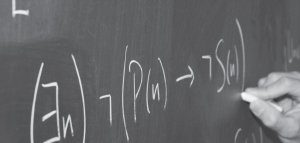Get lifelong access to this course for only $4.95 (US)!
The concept of validity is one of the most important concepts in logic. An argument is valid if and only if the truth of the premises is sufficient to guarantee the truth of the conclusion. For example, the following argument is valid:
Premise) Isaac is over 5 ft tall.
Conclusion) Isaac is over 4 ft tall.
However, the following argument is clearly invalid:
Premise) Isaac is over 4 ft tall.
Conclusion) Isaac is over 5 ft tall.
There are a number of ways of determining if an argument is valid or invalid. In this course, you will be introduced to one of the simplest of these: the Proof by Analogy method. First, you will master a range of very common valid and invalid argument patterns or forms such as modus ponens and modus tollens.
Modus Ponens
If P then Q
P
____
Q
Modus Tollens
If P then Q
Not-Q
____
Not-P
Next, you will compare the patterns or forms of arguments to the of the common valid and invalid forms you have learned. If the argument first a valid form, the argument itself is valid. And finally, you will learn to identify logically complex versions of the argument forms you have mastered.
Lesson 1: Arguments vs Non-Arguments AVAILABLE AS FREE SAMPLE LESSON!
Lesson 2: Valid vs Invalid Arguments
Lesson 3: Standard Form
Lesson 4: Logical Analysis of Arguments
Lesson 5: Some Common Valid & Invalid Forms
Lesson 6: Two More Valid Forms
Lesson 7: From Simple Sentences to Complex Formulae


